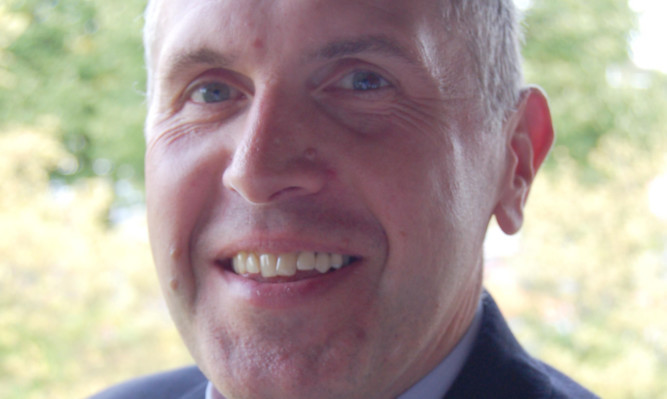Far from the days when every farm kept a dairy cow and there were many small-scale milk producers, the Scottish dairy industry is now concentrated in the hands of just over 1,000 farmers.
Stuart Martin is the man at the centre of the recently established Scottish Dairy Hub, which has been set up to provide professional advice to those producers in the extremely competitive market in which they operate.
Here he talks to David Andrews.
Q What does the Dairy Hub do?
A It was set up to provide independent advice to Scottish dairy farmers on a range of topics such as nutrition, training and animal health issues. It is basically a one-stop advice shop for milk producers.
Q How did it come about?
A It has been a vision for some time.
It came out last year as a recommendation from the Scottish Dairy Ambition 2025 document produced by James Withers of Scotland Food and Drink on behalf of the Scottish Government.
I was employed in June last year, with the official launch at AgriScot in November.
Q Can any dairy farmer in Scotland contact you and ask for advice on any dairy topic?
A Absolutely. How it works is simple. A dairy farmer can raise a topic related to dairy farming, and I will go and find out the answers for them or signpost them where to go to get the information.
Q For example, if there was a training need, you would find where the required training could be supplied?
A Yes. I have just had a farmer wanting to help the young man who is currently feeding his dairy calves. He is seeing him as a future member of staff and wants training. As such, he wanted to know the best places to get training.
I looked into the various sources and gave the farmer a list of options he can pursue.
Q Are many of the issues you deal with linked to the current economic problems in the industry?
A I have had a couple of inquiries asking for a good consultant to help with that side of the business.
There is no doubt a number of inquiries can be linked back to cost cutting, for example on food rations.
Q What other issues are you asked about?
A There is quite a range, from aspects of nutrition through to types of bedding, as well as artificial insemination and on farm-processing of milk.
One strong theme I am getting is there are a lot of requests on staff training and sourcing staff.
Q Have you been surprised at the level of requests made?
A I am surprised at the range of topics. It is all very encouraging
I think farmers may be surprised at how easy it is to access the Hub.
If nothing else, I will save them time.
I had one inquiry from a farmer looking for a mobile app to do mobility scoring in his cows.
I had to go through a number of different avenues before I found there was such a thing.
Basically, through contacting the Hub I can save the farmer time, energy and money in finding the answers.
Q You said the service was free. Where does the money come from to run the Hub?
A It is a three-year project part-funded by the Scottish Government and part by DairyCo.
Q DairyCo being?
A The levy board to which milk producers contribute.
Q The Hub operates in Scotland, but is there an equivalent in England?
A It is unique both to Scotland and to the dairy industry.
I know that others are looking at this as a model both in other parts of the country and in other sectors.
Q You have 1,000 milk producers in Scotland. They are mostly in the west but there are some in most parts of the country. Is that a geographical challenge for you?
A Not at the moment, but we are getting more and more inquiries.
We set ourselves a target of responding in 48 hours. The day I am unable to meet that target, my bosses have agreed there will be more help.
Q There is a lot of responsibility on your shoulders. What is your own background?
A For the past 11 years I managed Scottish Organic Milk, a dairy supply cooperative, so I know about dairying and many of the people in the industry.
Before that I worked in the packaging industry, where I got to know milk processors well, and prior to that I worked in Denmark for a firm that put on agricultural exhibitions.
While this job is in the dairy industry, I see it as more of a communication job. It is all about connecting people efficiently and accurately.
Q Are there areas of work the Hub will not touch?
A So far there has been nothing that I will not deal with.
If it is a sensitive issue such as a milk contract I will pursue it, but only where it is appropriate.
Q Where are you based?
A In Edinburgh, but we have a website and full contact details so it is easy for farmers to get in touch.
I travel around on a daily basis.
Q If you had one message for the dairy industry just now, what would it be?
A Use the Hub to help your businesses. I can help in a confidential, unbiased nature.
* Farmers can place their question to the Hub via its website (www.scottishdairyhub.org.uk), or by emailing info@scottishdairyhub.org.uk.
In addition the Hub can be contacted by phone on 08454 755110 or mobile 07500 766083; or by social media twitter: @scotdairyhub or Facebook (www.facebook.com/scottishdairyhub).
It fully appreciates the working schedule that dairy farmers operate under, and therefore is happy to be contacted at any time, seven days a week.
